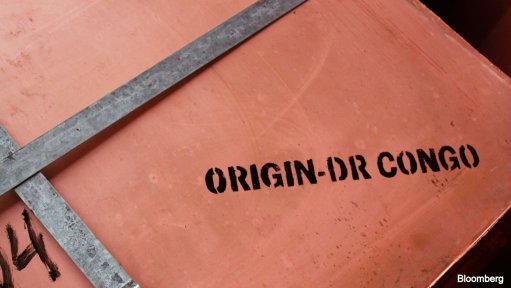After 20 years, Vermilion Energy is poised to keep on giving
TORONTO (miningweekly.com) – Canadian oil and gas producer Vermilion Energy is expecting to reach new heights over the coming five years, as its international portfolio of assets continues to grow and investors revere the company’s growing dividend.
From the start of the year, the company’s TSX-listed stock had grown by more than 20% in value to the lofty heights of C$75.16 apiece on Thursday, spurred in part by its prospects for organic growth and pricing upside for most of its products.
The company has oil and natural gas plays in Western Canada, Europe and Australia, with about 80% of its output tied to higher European gas and Brent oil pricing, which provides the company with high netbacks and strong cash-flow generation.
In an interview with Mining Weekly Online, director and CEO Lorenzo Donadeo pointed out that over the company’s 20-year track record, Vermilion had delivered on average 36.6% of compounded annual returns, which possibly ranked among the top-decile returns in the sector.
“We run a growth-and-income model, where we provide growing production and a reliable and growing dividend. We’ve never cut our dividend in 11 years, and we’ve increased it three times in the last six years,” Donadeo said.
The Calgary, Alberta-based company targets yearly organic production growth of 5% or more, along with paying a monthly dividend of C$0.215 a share, which provides a current yield of about 4%.
Management and directors of TSX- and NYSE-listed Vermilion hold about 8% of the outstanding shares.
“I think we have a lot of investors that really rely on the dividend and the reliability of it. People like the investment because you only get about 1% or 2% growth in the banks, while we provide a 3.5% dividend and share price appreciation.
“We are growing our production from well-defined projects. You will see our production grow by about 55% from 2013 to 2016, and our cash flow will grow by about 60% over this period, which creates more room for dividend growth,” he said.
Donadeo noted that besides its significant inventory of producing assets, the company also has a large inventory of drilling and development opportunities that would drive growth through to 2020, a lot of which would be organically driven.
This would from time-to-time be augmented with acquisitions. Donadeo said that the company was “extremely busy” considering acquisition options, looking at potential targets at a rate of about 100 a year.
PRICING UPSIDE
Donadeo said that Vermilion had traditionally been bullish on European gas, owing to the fact that Russia supplies about 30% of the region’s gas needs. Russia had historically demanded that the gas price be tied to that of heating oil, which resulted in a higher gas price of between $10 to $11 per million cubic feet (mcf).
Russia had also recently clinched a $400-billion, 30-year deal to feed China about 38-billion cubic metres of natural gas at that pricing. Combined with Russia’s recent incursions into the Ukraine and the geopolitical uncertainty that that brought with it, natural gas pricing was expected to find a floor at the $10/mcf level for some time yet.
Donadeo said that the other alternative source for Europe is to import liquid natural gas (LNG) from North America, but that the cost would be prohibitive at landed prices of about $12/mcf to $13/mcf. It would also take at least seven to eight years before Europe could install additional LNG terminals in Europe to accept shipments.
For this reason, the company had been busy increasing its European gas exposure, with projects in France, the Netherlands and Germany, enhanced by the latent Corrib gas field project, in Ireland, which would start production from mid-next year.
Combined, Vermilion’s European gas assets would be producing about 115 mcf of gas in Europe, accounting for about a third of the company’s operating cash flow.
On the oil side, Vermilion also has exposure to Brent pricing for its French and Australian production, which fetches about $15/bl more than in North America, which is held back by infrastructure bottlenecks.
Brent crude oil on Thursday traded at $108.88/bl.
PRODUCTION PIPELINE
In Canada, most of Vermilion’s efforts are focused around Drayton Valley, in Western Alberta, where it has three key assets.
These include the Cardium light oil development; the Mannville liquids-rich gas inventory; and also the Duvernay liquids-rich gas resource play.
Donadeo said that the company intended to drill about 36 wells at Cardium this year. He noted that it was an oil play that drove extremely strong returns in the range of 60% to 80% on each well.
The play in the first quarter achieved output of about 10 400 bbl/d. Donadeo said that the company brought the field to this production level from a standing start, with no production in 2010.
There remain about seven years of drilling, meaning Vermilion will continue to drill between 30 to 50 wells a year.
At the Mannville play, the company has significant land-holdings with over 212 000 acres and 200-plus prospective and contingent development locations. The company had recently started drilling, drilling six Mannville development wells, which averaged more than 3 000 barrels of oil equivalent (boe) per day during the first quarter.
“In 2014, we plan to drill eight Mannville wells, and we expect drilling activity to increase in future years as we continue to develop the play and expand our inventory of economic prospects,” Donadeo said.
Further, Vermilion continued to appraise its position in the Duvernay condensate-rich resource play, where it had have amassed 317 net sections at the relatively low cost of about $76-million ($375/acre).
“Our Duvernay rights generally underlie our Cardium light oil and Mannville condensate-rich gas rights, which creates the potential for infrastructure, and operational and timing advantages, if we progress to full development of the Duvernay resource play.
“In combination, our Cardium, Mannville and Duvernay positions provide us with exploration and development opportunities in our core Canadian operating region, which has the potential to deliver strong production and reserve growth into the latter half of the decade,” he said.
Meanwhile, Vermilion in March struck a deal to acquire Elkhorn Resources, a private south-east Saskatchewan producer, for $427-million.
The assets consist of high netback, light oil-producing assets in the Northgate region and include about 57 000 net acres of land (about 80% undeveloped), seven oil batteries, and preferential access to 50% or greater capacity at a solution gas facility that is currently under construction.
Production from the assets is expected to average about 3 750 boe/d (97% crude oil) during 2014. More than 90% of the current production base is operated by Vermilion. The company had to date identified about 175 (152 net) potential drilling locations targeting the Midale, Frobisher, Bakken, and Three Forks/Torquay formations.
EUROPEAN POTENTIAL
In France, Vermilion kicked off its 2014 drilling programme by drilling the Parentis-224 (PS-224) well, which it is currently evaluating. It was the first of a nine-well drilling programme that would target drilling in the Champotran, Cazaux, Parentis and Tamaris fields.
Vermilion also continued to complete preparations for the phased transfer of its Vic Bihl natural gas production, which is currently shut-in, from the Lacq gas processing facility, where it was previously handled, to an alternative third-party facility.
“With our continued expansion in France, our French business has become well positioned to be an organic oil growth asset featuring low base decline rates, high netbacks from Dated Brent-based production, strong cash flow generation and high capital efficiencies on development projects,” Donadeo said.
In the Netherlands, Vermilion drilled the first two wells of its seven-well 2014 drilling programme during the first quarter. The Leeuwarden-102 well was being tested in a partially depleted Vlieland sand interval, and it was unclear at this point whether it would warrant tie-in.
The Hempens-01 well was wet on open-hole logs and was plugged and abandoned.
During the first quarter of 2014, Vermilion was awarded the Ijsselmuiden exploration concession, which consists of about 110 500 net undeveloped acres, further increasing its undeveloped land base in the Netherlands to more than 800 000 net acres.
“We have identified several new development opportunities on the recently awarded concessions and on the lands acquired in the fourth quarter of 2013, increasing our already significant inventory of investment projects in the Netherlands. Beginning with the 2014 drilling programme, it is our intention to methodically increase annual activity levels in the Netherlands to maintain a rolling inventory of projects so that each year’s capital programme will involve a combination of drilling new wells and the tie-in of previous successes,” he said.
In Ireland, Vermilion held an 18.5% working interest in the Corrib gas field. It last month reported that tunnel boring operations beneath Sruwaddacon Bay had been completed at the Corrib project. The tunnel, which reached its total length of 4.9 km, would serve as a conduit for the gas pipeline between the Bellanaboy gas processing facility to the offshore pipeline landing valve at Glengad.
Donadeo said that this was probably the most critical milestone for the project, and the company was now in firm grasp of first production from mid-2015, with peak production estimated at about 58 mcf/d (about 9 700 boe/d) net to Vermilion.
DOWN SOUTH
In Australia, Vermilion operates the Wandoo field and offshore platform in the north-west of the country, where it drills about two new wells every two years, in order to maintain its production levels at between 6 000 bbl/d and 8 000 bbl/d for the foreseeable future.
Wandoo’s oil currently garners a premium of about $7.00 to the Dated Brent index and incurs no transportation cost as production is sold directly at the platform.
Comments
Press Office
Announcements
What's On
Subscribe to improve your user experience...
Option 1 (equivalent of R125 a month):
Receive a weekly copy of Creamer Media's Engineering News & Mining Weekly magazine
(print copy for those in South Africa and e-magazine for those outside of South Africa)
Receive daily email newsletters
Access to full search results
Access archive of magazine back copies
Access to Projects in Progress
Access to ONE Research Report of your choice in PDF format
Option 2 (equivalent of R375 a month):
All benefits from Option 1
PLUS
Access to Creamer Media's Research Channel Africa for ALL Research Reports, in PDF format, on various industrial and mining sectors
including Electricity; Water; Energy Transition; Hydrogen; Roads, Rail and Ports; Coal; Gold; Platinum; Battery Metals; etc.
Already a subscriber?
Forgotten your password?
Receive weekly copy of Creamer Media's Engineering News & Mining Weekly magazine (print copy for those in South Africa and e-magazine for those outside of South Africa)
➕
Recieve daily email newsletters
➕
Access to full search results
➕
Access archive of magazine back copies
➕
Access to Projects in Progress
➕
Access to ONE Research Report of your choice in PDF format
RESEARCH CHANNEL AFRICA
R4500 (equivalent of R375 a month)
SUBSCRIBEAll benefits from Option 1
➕
Access to Creamer Media's Research Channel Africa for ALL Research Reports on various industrial and mining sectors, in PDF format, including on:
Electricity
➕
Water
➕
Energy Transition
➕
Hydrogen
➕
Roads, Rail and Ports
➕
Coal
➕
Gold
➕
Platinum
➕
Battery Metals
➕
etc.
Receive all benefits from Option 1 or Option 2 delivered to numerous people at your company
➕
Multiple User names and Passwords for simultaneous log-ins
➕
Intranet integration access to all in your organisation





















